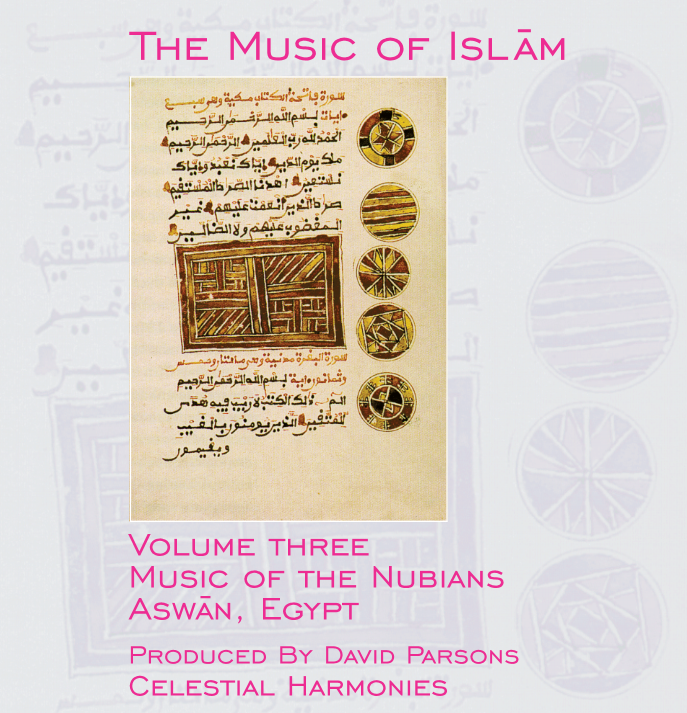 |
||||||||||||||||||||||||||||||||||||

The Music of Islam Sampler (13159).
In seiner aufwendigen Forschungsarbeit folgt David Parsons den vielfältigen
Spuren der heutigen islamischen Musik zurück bis zu den Wurzeln.
Das Ergebnis ist eine Produktion, die international Aufsehen erregte
und 1998 den Preis der Deutschen Schallplattenkritik erhielt: Auf
insgesamt 17 CDs spielen und singen Gnawas und Derwische, Muezzins
und Volksmusiker. Von Indonesien und Pakistan bis Tunesien und Südspanien
reicht das geografische Spektrum, über 12 Jahrhunderte das historische.
Zu jeder CD gibt es ein sehr informatives, etwa 50-seitiges Begleitheft
(in englisch). Man kann die CDs einzeln oder als Gesamtpaket in einer
Holzbox erwerben. Hier die Zusammenfassung der ganzen Serie. Ausgezeichneter
Einstieg.
the projectTen years in the making, The Music of Islam series recorded in Egypt, Morocco, Tunisia, Turkey, Yemen, Pakistan, Indonesia, Iran and Qatar represents the most comprehensive sound documentation available to Westerners today, of a world religion dating back to 1/622. Although governed by strict rules for fourteen centuries, contact with other cultures has radically affected Islamic music throughout history. As the world enters the XV/21st century the timing of this collection serves an even larger purpose, documenting the traditions that have survived and will continue to survive for centuries to come. Today, one fifth of the world's population, one billion people, are Muslims, occupying a large territory stretching from the Atlantic shore of north and west Africa, through west, central, and south Asia to island southeast Asia, and attracting an increasing following in India, western Europe, north America, east Asia, and southern Africa. This is a global presence which cannot be ignored. From ancient times, Nubian peoples have flourished in the land along the Nile River. But Egyptian projects to dam the river at Aswan have, over time, submerged the Nubian territories along the Nile under water. And with the completion of the Aswan High Dam and Lake Nasser came the inundation of the entire Nubian valley in southern Egypt. As a result, the Egyptian Nubians irrevocably lost what remained of their ancestral lands along the Nile and were forcibly relocated. The resettlement has given rise to a range of social problems, and many aspects of Nubian culture and social organization that previously existed have now changed or disappeared. Despite efforts to survive or revive their culture, at this present point in the epic history of the Nubians, when their ancestral land is lost, and when their language is no longer the medium of either their religion or their government, music may in fact prove to be the best means for preserving something of the ethos of Nubian culture, and for adapting it to further changes in the future. the artistsRecorded at the Aswan Palace of Culture in Aswan,
Egypt, this third volume in The Music of Islam series is performed
by the highly acclaimed Aswan Troupe for Folkloric Arts,
under the musical direction of Dr. Fawzy Fawzy. Originally formed
of amateurs to participate in weddings and celebrations in the homes
of friends and relatives, the troupe quickly evolved into a professional
organization. With the support of the Palace of Culture's director
and Aswan's governor, the troupe made its first public performance
in 1395/1975, featuring a number of folk dances and representing various
customs and traditions of the region. The troupe is co-directed by
Dr. Modather Saleem Ahmed and Dr. Fawzy Fawzy.
The traditional instruments featured, which are used to accompany Nubian song and dance, include the 'ud (fretless, short-necked lute), tabla (or tabalah, single–headed tapered drum) and tar (or duff, round framedrum). The typical song style is based on alternation of a solo singer with a chorus. Both song and dance are often accompanied by intricate patterns of hand–clapping and foot-stomping. Wedding celebrations, which can last up to a week, are the main social setting for performing traditional Nubian music and dance. tracklist
|
||||||||||||||||||||||||||||||||||||
|
|
||||||||||||||||||||||||||||||||||||
 |


